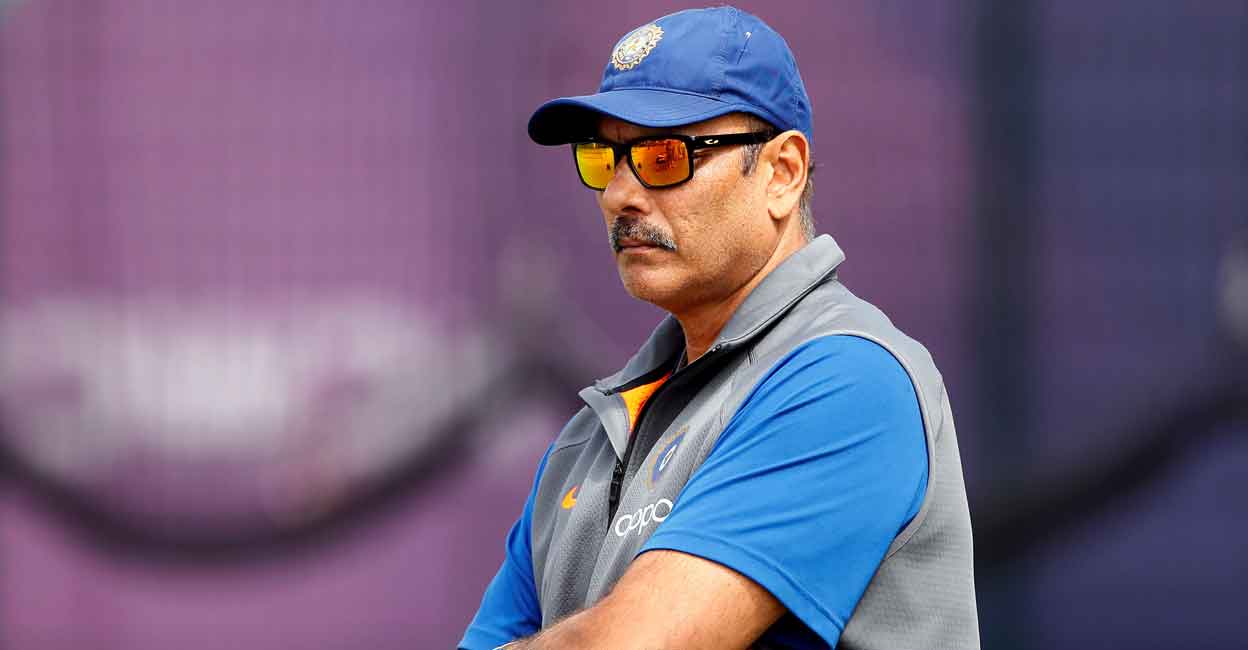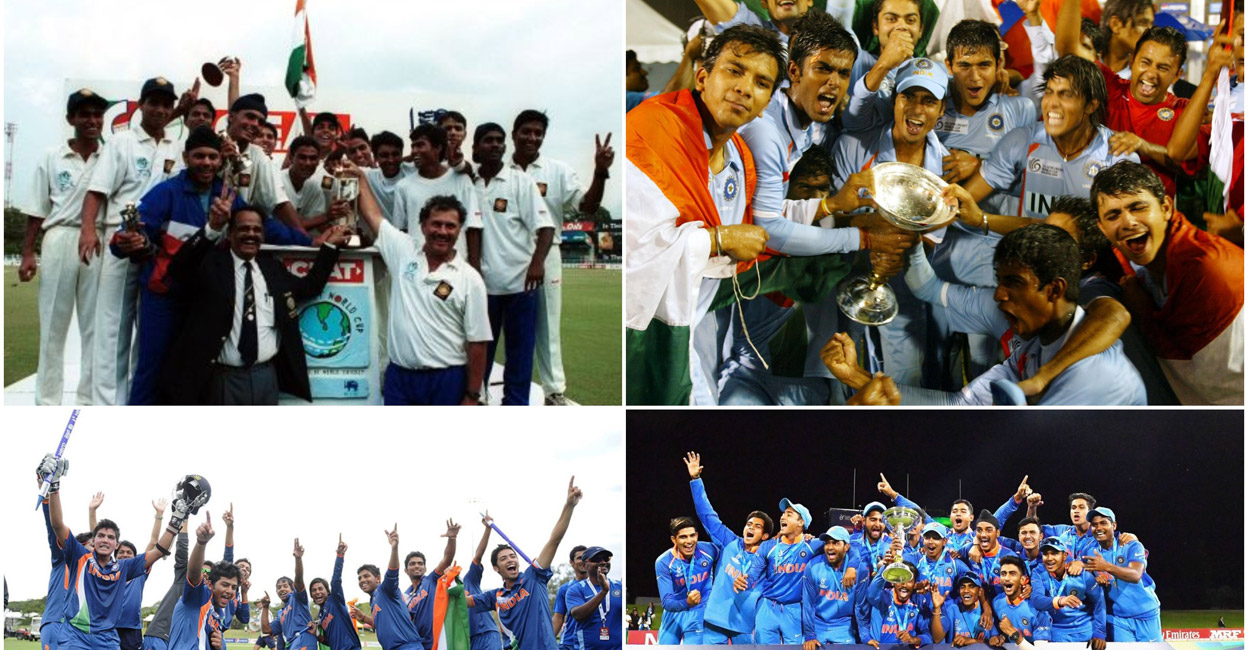Column | U-19 success no guarantee to glory at senior level

Mail This Article
Good news for India on the cricketing front was brought by the younger lot who lifted the trophy in the recently-concluded International Cricket Council (ICC) Under-19 World Cup held in the West Indies. The team, led by Yash Dhull, a right-hand middle order batsman, won all the matches to emerge champions in style, thus clinching a record-extending fifth title. In doing so, Dhull joined Mohamed Kaif, Virat Kohli, Unmukt Chand and Prithvi Shaw, who had all led the Indian colts to glory in the U-19 World Cup. Dhull had a good run with the bat during the championship, scoring a century against Australia in the semifinals besides two half- centuries during the league phase.
The advantage of success at junior levels is that this thrusts you immediately into the spotlight at the national level. This ensures more opportunities and recognition which, if properly utilised, can pave the way for a slot in the senior national squad, as happened in the case of Kaif, Kohli and Shaw. But, on the flip side, this also carries with it intense mental stress on account of heightened expectations, which some youngsters may find too difficult to handle. Chand is one example of a promising talent who could not find his feet at the senior level after enjoying a good run with the junior squad. Hence it will be interesting to find how former captains at junior levels fared after entering the arena of the seniors.
While going through the list of former skippers on Indian school boys side, the precursor of U-19 squads of the present, the first name that comes up is that of Eknath Solkar, who led the side during the 1964-65 period. He was followed by Ajit Naik, a right-arm fast bowler from Mumbai, who led the side during a tour of England in 1967. This side made d history by not losing a game during the tour and won nine out of the 17 matches they played. The highlight of this visit was the match against Marylebone Cricket Club (MCC) Schools, where Surinder Amarnath hit two sixes off the last couple of balls to seal a stunning victory. Naik played for a couple of seasons for Mumbai in the Ranji Trophy before focussing on a career away from the game.
The next tour by the Indian school boys to England took place in 1973, when Bharat Reddy, a wicketkeeper from Chennai, led the side. Though the team had many promising players, including Rajinder Amarnath, the third son of the legendary Lala, none of them could make the grade to higher levels, except skipper Reddy, who played for India in 1979. Ravi Shastri, coach of Indian team till recently, was the next captain of national school boys team, when he was appointed to lead the squad for a tour of Pakistan in 1980. Though the visit to Pakistan did not materialise, a series took place against Sri Lanka in the latter part of the year. Shastri, who had made his debut in Ranji Trophy in 1980, was chosen as a member of the national side in February, 1981.
The first ever international championship in cricket for youth was held in Australia in 1988. This was later rechristened as the first ICC U-19 World Cup. Indian side for this championship was led by Senthilnathan from Tamil Nadu but the team could not get beyond the quarterfinal stage. Despite being prodigiously talented, Senthilnathan could not not fare well at the first-class level and hung up his boots after the 1995-96 season when he played as a professional for Goa. He found greater success in his career as a coach after his active playing days. But five players from this squad - Pravin Amre, Nayan Mongia, Venkatapathi Raju, Narendra Hirwani and Subroto Banerjee - played for the country at the highest level.
Amit Pagnis of Mumbai led India in the next U-19 World Cup which was held in 1998, after a gap of 10 years. Four members of this squad - Virender Sehwag, Harbhajan Singh, Kaif and Amit Bhandari - went on to play for the national senior squad. Though this was a star-studded side, they could not reach the last four stage and ended up in the fifth place. Pagnis, a left-handed batsman, himself could not get beyond first-class cricket, where he scored more than 5,000 runs while turning out for Mumbai and Railways.
The star of the Kaif-led Indian side that won the championship in 2000 was Yuvraj Singh. In addition to the duo of Yuvraj and Kaif, who formed a brilliant combination in International cricket, only Ajay Ratra, the wicketkeeper from Delhi could turn out for the country at the senior level, from among the members of this squad. India fell in the semifinals in the 2002 and 2004 editions of the tournament and finished runners-up in 2006. Parthiv Patel and Ambati Rayudu, who led in 2002 and 2004 respectively went on to play for India while Ravikant Shukla, the captain in 2006, ended up playing first-class cricket for Uttar Pradesh with only moderate success. Incidentally Rohit Sharma, the present national captain in white-ball cricket, was a member of the squad for the 2006 championship, which also included Ravindra Jadeja, Cheteswar Pujara, Ishant Sharma and Piyush Chawla.

Kohli showed the first flashes of his brilliance when he led the Indian colts to a comprehensive win in the 2008 World Cup. He made the move to the senior level quickly and was a member of the national side that won the 2011 ICC World Cup. The career of Ashok Menaria, the captain for the 2010 U-19 World Cup where India fared poorly, losing to Pakistan in the quarterfinals, could not emerge above first-class cricket and the Indian Premier League (IPL). Chand, his successor at the helm, too could not rise above first-class level despite winning the 2012 edition. A similar fate awaited Vijay Zol, who led the side in 2014 U-19 World Cup where India crashed out in the quarterfinals, as he faded away after a series of modest performances at the first-class level.
Rishabh Pant was a member of the side led by Ishan Kishan that took part in the 2016 edition. Despite the presence of these two future stars and Washington Sunder in their ranks, the side lost to West Indies in the final. Shaw, the captain of the side that won the trophy in 2018, had kickstarted his career in first-class cricket with a bang with a century on debut both in Ranji Trophy and Duleep Trophy, even before the ICC tournament. He was soon inducted into the national squad for Test matches, where he announced his arrival in style with yet another century on his debut. But his career has been plagued since then on account of a series of issues outside the playing arena. Priyam Garg, the skipper for 2020 tournament where India lost in the finals, is still a long way from making the national team and is currently playing first-class cricket for Uttar Pradesh.
From the above, it could be seen that being a part of or even leading the national junior side, even one that wins the World Cup, is not a surefire recipe for success at the highest level. Many a talented cricketer has fallen by the way side, unable to cope with the pressures of battling it out - first, for winning a place in the national side and, later, for making a mark in the international arena. The transition from competitions restricted by age limit to the high intensity, no holds barred, gladiatorial battle ground of first-class cricket and the IPL is a difficult one that only the toughest are able to make.
Finally, it should not be forgotten that there exists many players who reached the national squad without turning out for the country at the U-19 level and performed exceptionally well at the highest level. A look at the career of maestros such as Sachin Tendulkar, Sourav Ganguly, Mahendra Singh Dhoni, Jasprit Bumrah etc will show that one need not always come through the rungs of junior cricket to succeed while turning out for the country. They possessed the talent and temperament to bypass the route of age limit tournaments and be successful in the high-pressure arena of international cricket.
Thus, while age limit competitions of the Board of Control for Cricket in India and ICC are stepping stones, they do not ensure that all those who take this route will emerge successful. This axiom must be borne in mind by all members of the victorious squad as they embark on the next phase of their career.

(The author is a former international cricket umpire and a senior bureaucrat)


